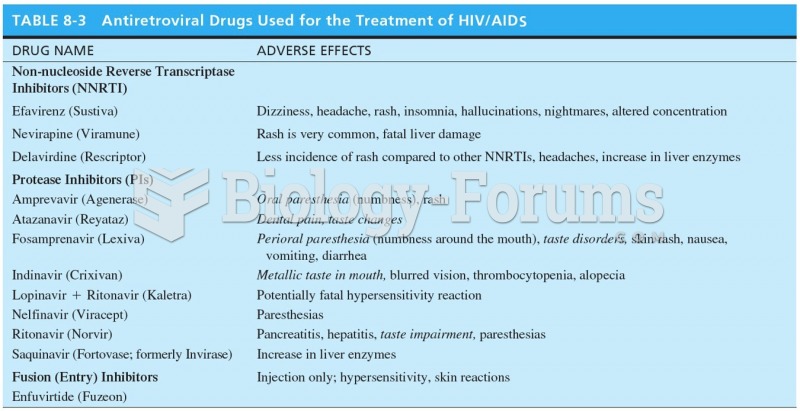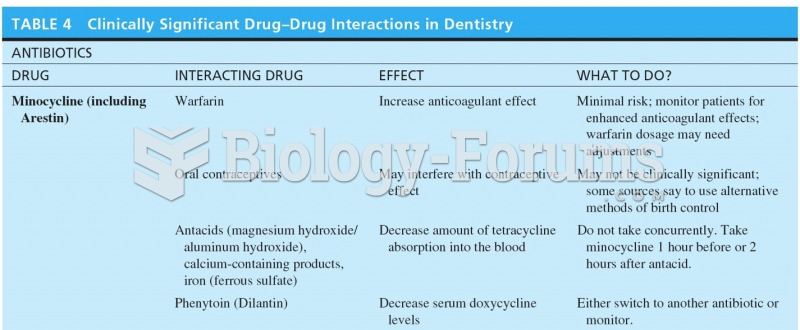Answer to Question 1
Correct Answer: 2
Rationale 1: Increased life span is a goal of drug therapy for HIV-AIDS.
Rationale 2: There are no drugs available currently that will cure HIV-AIDS.
Rationale 3: Increased quality of life is a goal of drug therapy for HIV-AIDS.
Rationale 4: Reduced HIV RNA in the blood is a goal of drug therapy for HIV-AIDS.
Global Rationale: At present the disease cannot be cured and goals of therapy include reducing morbidity, improving quality of life, restoring and preserving immunologic function, suppressing viral load, and preventing transmission from mother to child in pregnant patients who have HIV infection.
Answer to Question 2
Correct Answer: 1,2,3,5
Rationale 1: HIV may be transmitted through contact of infected fluids with needles.
Rationale 2: HIV may be transmitted through sexual activity.
Rationale 3: Newborns of an HIV-infected mother may acquire the virus through breast milk.
Rationale 4: HIV infection occurs by exposure to contaminated body fluids, most commonly blood or semen, because these fluids have the highest concentration of the virus. The virus is not transmitted through casual contact.
Rationale 5: Newborns of an HIV-infected mother may acquire the virus during birth.
Global Rationale: HIV infection occurs by exposure to contaminated body fluids, most commonly blood or semen, because these fluids have the highest concentration of the virus. Transmission may also occur through sexual activity or through contact of infected fluids with broken skin, mucous membranes, or needlesticks. Newborns of an HIV-infected mother may acquire the virus during birth or breast-feeding. The virus is not transmitted through casual contact.







